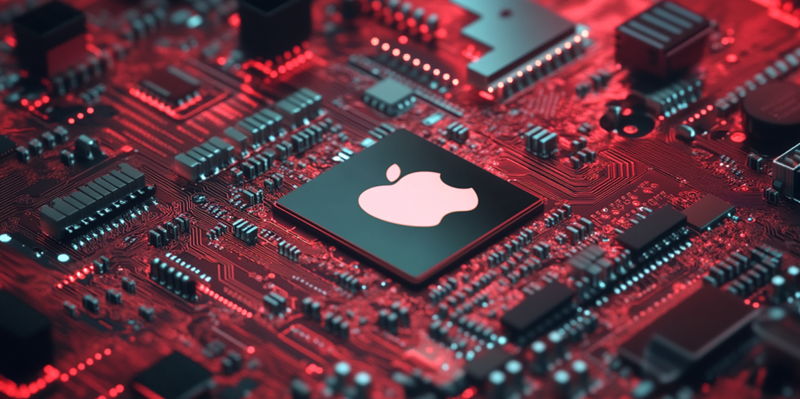Apple’s recent unveiling of its M4 chip, first introduced with the new iPad Pro, represents a significant strategic shift for the tech giant towards enhancing its mobile and touch computing capabilities without disregarding its traditional laptop market. The M4 chipset, crafted on TSMC’s cutting-edge 3nm process node, is equipped with a 10-core CPU and GPU. While it retains the architectural similarities of its predecessor, the M3 chip, the M4 boasts a more efficient design and an updated instruction set. Furthermore, its enhanced neural processing unit (NPU) delivers an impressive 38 trillion operations per second (TOPS), underscoring the chip’s capability in artificial intelligence.
Benchmark tests conducted on Geekbench highlight the M4’s superior performance metrics. The single-core and multi-core CPU scores are up by 25% and 32% respectively when compared to the M3 chip, indicating a substantial improvement. The GPU performance has also seen a 25% boost, though the real-world impact on gaming and graphic-intensive tasks remains to be fully evaluated. Differences in benchmarks between MacBook Pro and iPad Pro models suggest that the MacBook Pro benefits from superior thermal solutions, which may influence performance outcomes. This showcases how Apple is leveraging its silicon expertise to deliver high-performance, energy-efficient processors that cater to both mobile and traditional computing needs.
A New Era of Performance and Efficiency
The introduction of the M1 chip in 2020 marked Apple’s successful transition from x86 to Arm-based architecture. This shift brought notable advantages in terms of battery life and the ability to handle multithreaded workloads, setting a new standard in the industry. As a result, competitors like Microsoft, Qualcomm, Intel, and AMD have been prompted to enhance their own chip offerings, yet Apple continues to maintain a discernible lead. The M4 chip continues this trajectory of innovation, promising both performance improvements and energy efficiency, which are crucial for mobile and touch computing environments.
The forthcoming variants, M4 Pro and M4 Max, are anticipated to push the performance boundaries even further. This continuous innovation in silicon design underscores Apple’s dedication to reshaping the computing landscape through its proprietary technology. By doing so, Apple not only fortifies its market position but also sets the pace for future developments in the industry. The enduring question remains: can Apple’s competitors catch up, or will Apple continue to dominate the high-performance, energy-efficient computing segment? This ongoing evolution in chip technology is poised to redefine how mobile and touch computing devices perform and function on a day-to-day basis.
The Broader Shift Towards Arm-Based Architectures and AI
Apple recently unveiled its M4 chip, debuting with the new iPad Pro, signaling a strategic pivot to bolster its mobile and touch computing capabilities without neglecting its traditional laptop lineup. Built on TSMC’s 3nm process node, the M4 sports a 10-core CPU and GPU, mirroring the M3 chip’s architecture but with a more efficient design and updated instruction set. An enhanced neural processing unit (NPU) in the M4 executes an impressive 38 trillion operations per second, emphasizing its robust AI capabilities.
Benchmark tests on Geekbench reveal the M4’s superior performance: single-core and multi-core CPU scores have risen by 25% and 32%, respectively, compared to the M3. The GPU performance has also surged by 25%. While the real-world effects on gaming and graphics-heavy tasks have yet to be fully assessed, early indications are promising. Notably, MacBook Pro and iPad Pro benchmarks suggest that the MacBook Pro benefits from better thermal solutions, potentially influencing performance.
This development showcases Apple’s prowess in creating high-performance, energy-efficient processors that adeptly serve both mobile and traditional computing domains.

